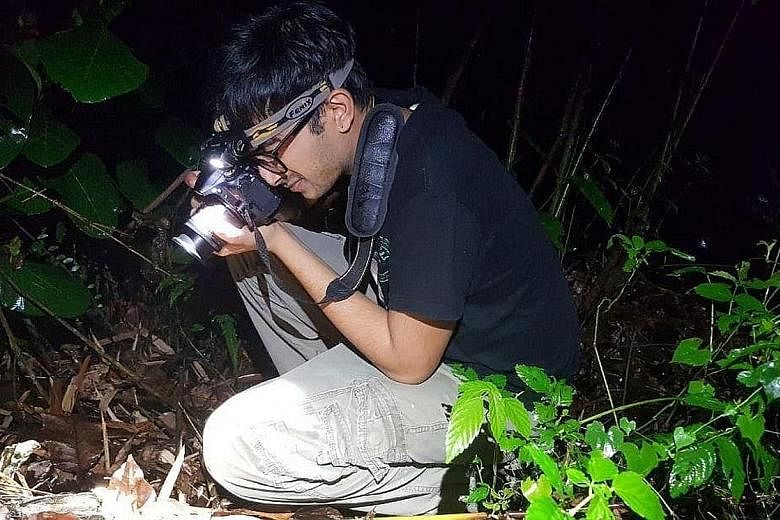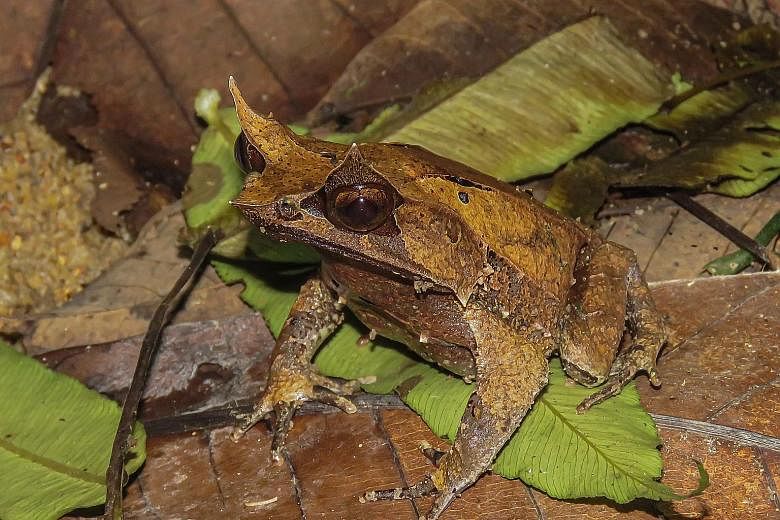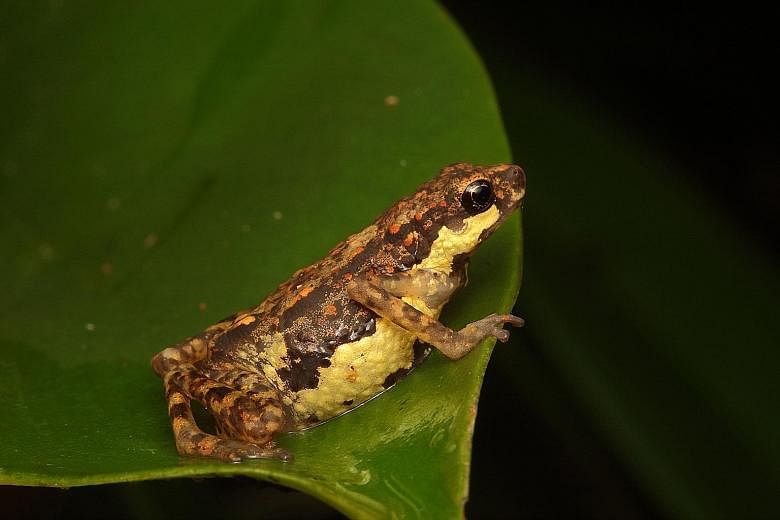Listen out for a chorus of frog calls after dusk.
The Herpetological Society of Singapore, which studies reptiles and amphibians, has invited the public to submit their own recordings of frog calls to help it better understand the distribution of frogs around the island.
Frogs are known to be vocal creatures, and each species has its own distinct types of alarm, mating and other calls.
They are also especially active at night and during the monsoon period, as they typically breed in bodies of water.
Common frog species which thrive in urban areas include the Asian toad, the dark-sided chorus frog, and the banded bullfrog. Toads are a subset of frogs.
Mr Sankar Ananthanarayanan, co-founder of the Herpetological Society of Singapore, said the initiative was piloted in the hope of making people more aware of the life around them.
More than 30 recordings have been contributed since the collection began in September.
They will be analysed by the society's volunteers, and the contributors will be informed about which species they had identified.
"Understanding the bioacoustics of the frogs is very useful, as it allows us to identify the frog species in various areas, which may not be as easily detected visually.
"Having a comprehensive library can help to improve biodiversity assessments around the island," said Mr Sankar.
"Ideally, this would give us a sense of the different frog species populating the island," he added.
The recordings collected by the public can also provide scientists with information such as the time and location of the frog calls, as well as corroborate existing data on the presence of various species.
A frog call library was established by the society over a year ago, with 31 different calls from 27 species on record so far.
These include rarer species and some that were part of the National Parks Board Species Recovery Programme, such as the cinnamon bush frog, which is found here only in the Bukit Timah and Central Catchment nature reserves.
Other rare species captured in the recordings include the Malayan horned frog, which has a distinctive metallic honk, and the Inger's dwarf toadlet, which lays its eggs in tree holes.
"With this database of frog calls, and the contributions from the public, we hope to familiarise people with the amphibians' soundscape, and identify potentially new and unrecorded species if we're lucky," said Mr Sankar.




